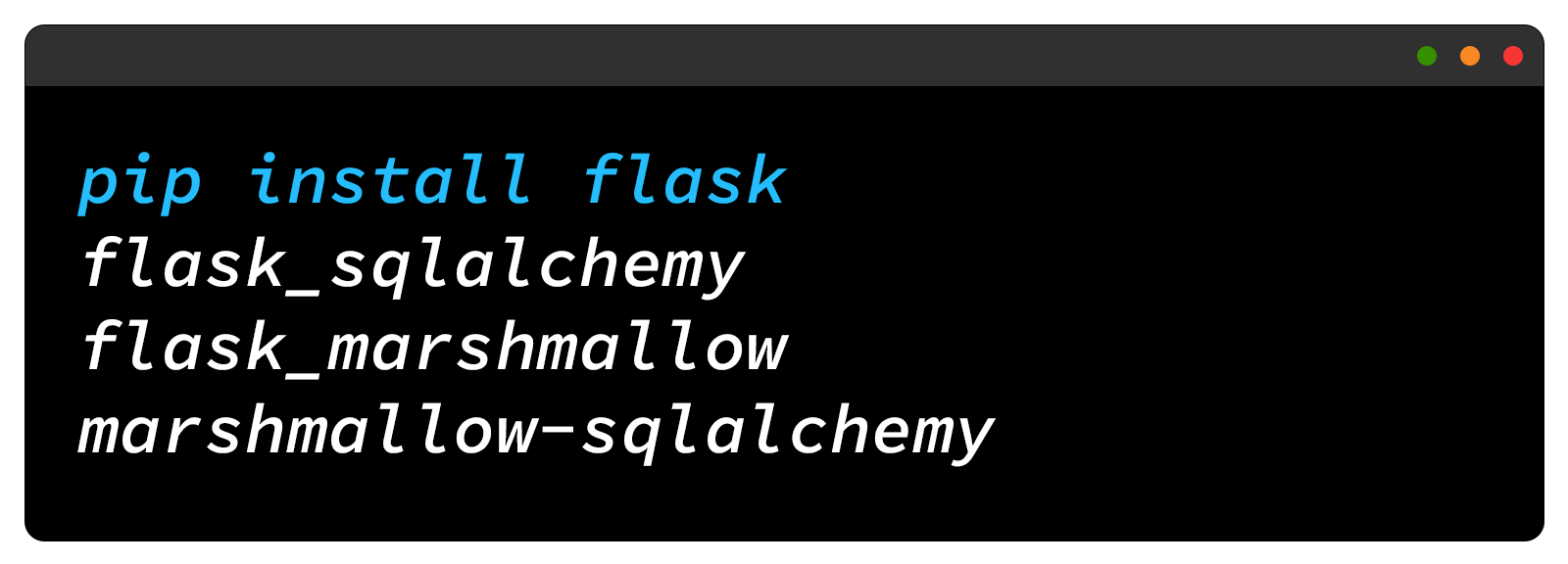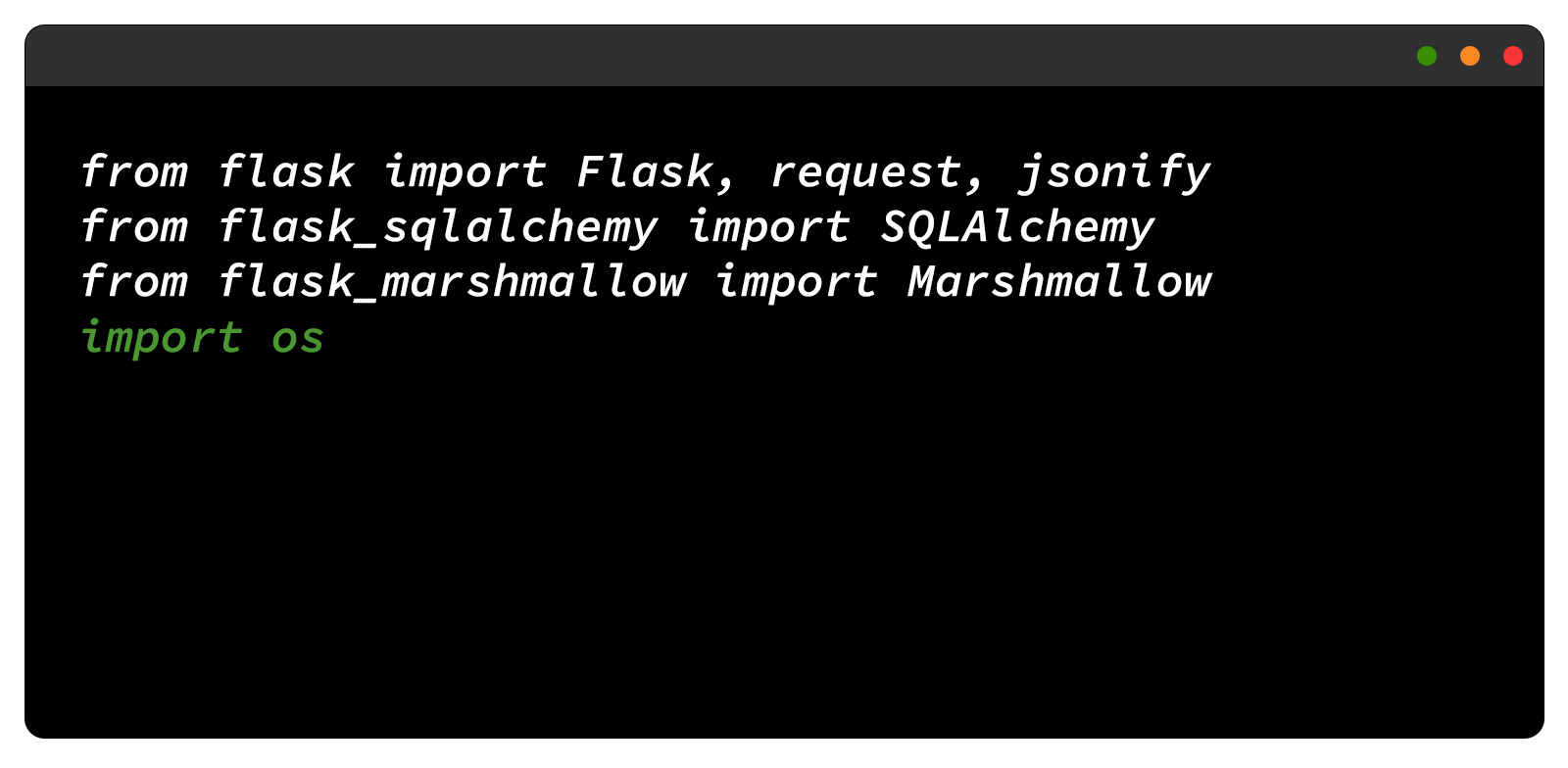Among the many languages used to build these, Python has taken the limelight. It's one of the reasons why a Python certification course is highly sought after and why Python Training in Ahmedabad is so popular.
- The digital age has ushered in an era of interconnectivity where applications frequently share data and communicate.
- The driving force behind this seamless integration is the Application Programming Interface (API), a set of protocols that allow different software applications to interact.
Among the types of APIs, RESTful APIs, or REST APIs, have gained significant popularity due to their simplicity and scalability.
But what exactly is a REST API, and why is Python so well-suited to creating them? Today, we will unravel the mystery behind the Rest API in Python, a key concept for Python web APIs.
So sit tight as we guide you through a Python Rest API tutorial to help you create a Rest API with Python.
Understanding REST APIs
At its core, a REST (Representational State Transfer) API (Application Programming Interface) serves as a contract between different software systems.
It allows these systems to communicate, exchange data, and interact with each other in a standardized way. The primary operations that a REST API supports include requests like:
Additionally, it can handle PAGINATION, AUTHENTICATION, RATE-LIMIT, DATA VALIDATION, and PARTIAL RESPONSES.
This flexibility ensures that a REST API can cater to various use cases, ranging from fetching data from a server to updating a resource on a database.
Python Rest API tutorial
Python provides a robust framework for building REST APIs. This framework is based on the Model-View-Controller (MVC) architectural pattern, which divides an application into three interconnected components:
- Controller: This component manages how a request is handled. It creates URL endpoints and manages aspects like pagination, formatters, authentication, authorization, rate-limiting, and allowed methods.
- Data Store: This is the component that interacts with the data. Each controller method calls the Data Store to retrieve data from the resource. The Data Store can act on various resource types, such as a database backend, an API backend, a CSV backend, etc.
- View: The View defines how the data should be sent to the client. It passes a Response object and sets the needed headers, mime type, and other presentation options.
When using a REST API in Python, you'll create endpoints for each of which you'll define a resource, a controller, and a view. These are then added to the WSGIDispatcher in the rest_api_framework.controllers.
Creating Rest API with Python
here's a step-by-step guide to building a simple REST API with Python using Flask, Flask-SQLAlchemy, and Flask-Marshmallow:
You'll need Python installed on your computer.
python --version
You'll also need to install Flask, Flask-SQLAlchemy, and Flask-Marshmallow, which you can do using pip:
Open a new Python file and import the necessary modules:
- Initialize the Application
Initialize the Flask application, SQLAlchemy, and Marshmallow:
Create the model for the resource. For this example, we'll use a simple User model with an ID and name:
Create a Model
Create a Schema
Create a schema for the User model. This will help with the serialization of the model:
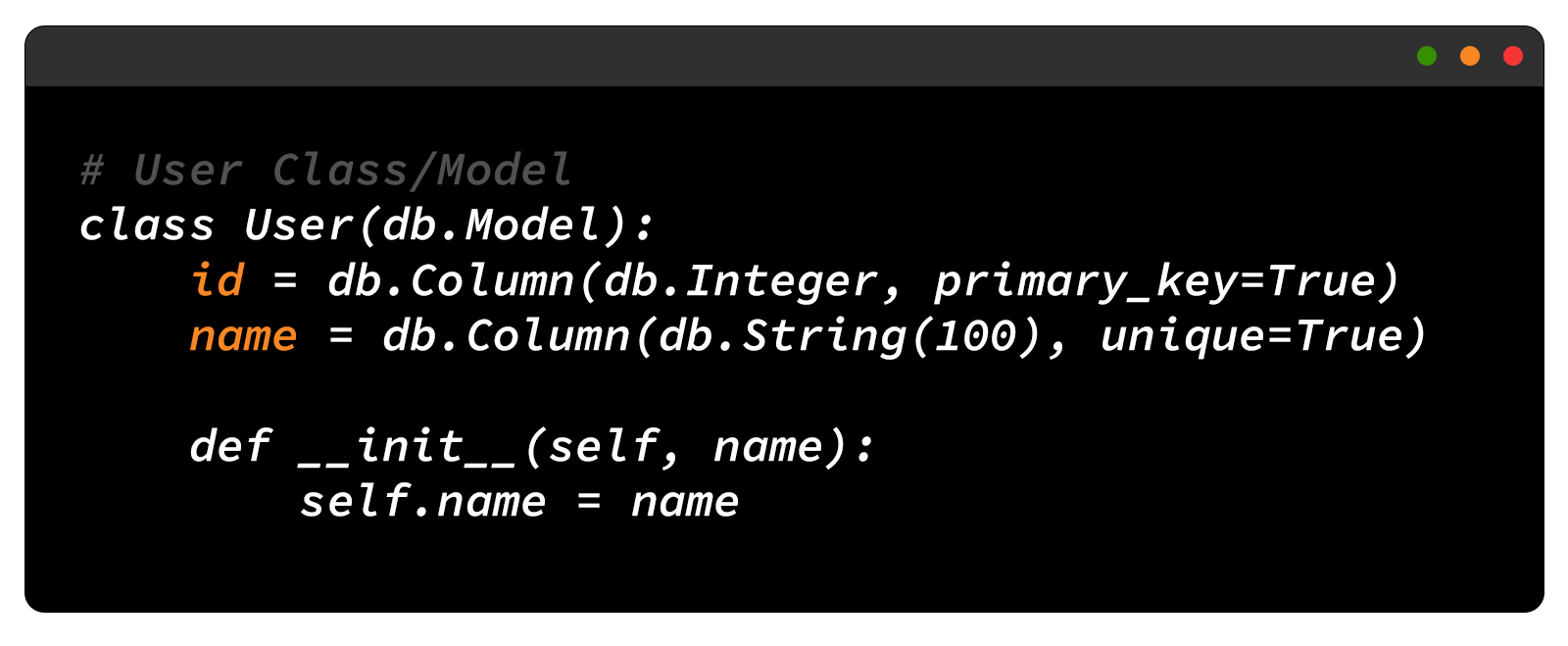
Create a schema for the User model. This will help with the serialization of the model:
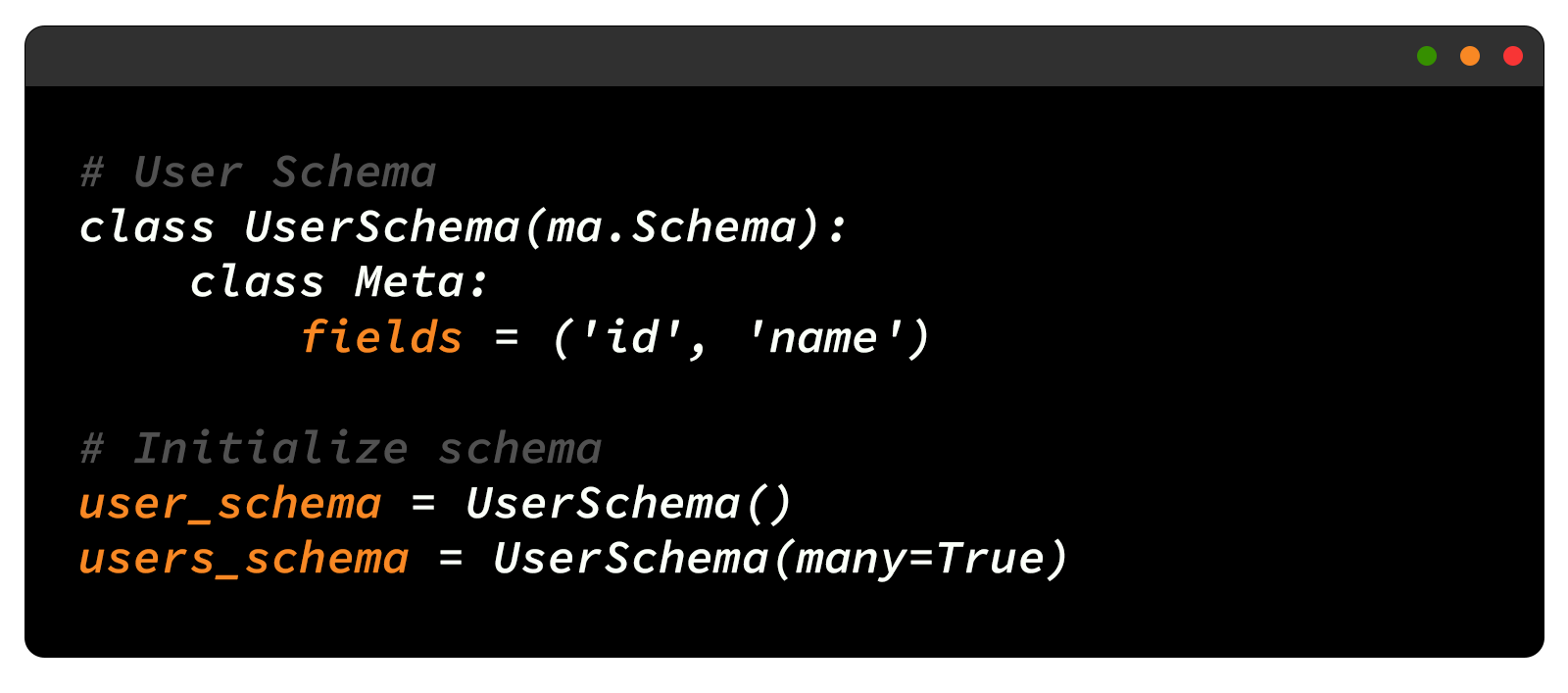
You can now create endpoints for the API. Here's an example of endpoints to create a user, get all users, get a single user, update a user, and delete a user:

Finally, run the application:

Now you can test your endpoints using a tool.
- Explanation of the code in-depth
Here's a more detailed version of Python web development with Rest API with necessary imports and setup instructions for running the Flask application.
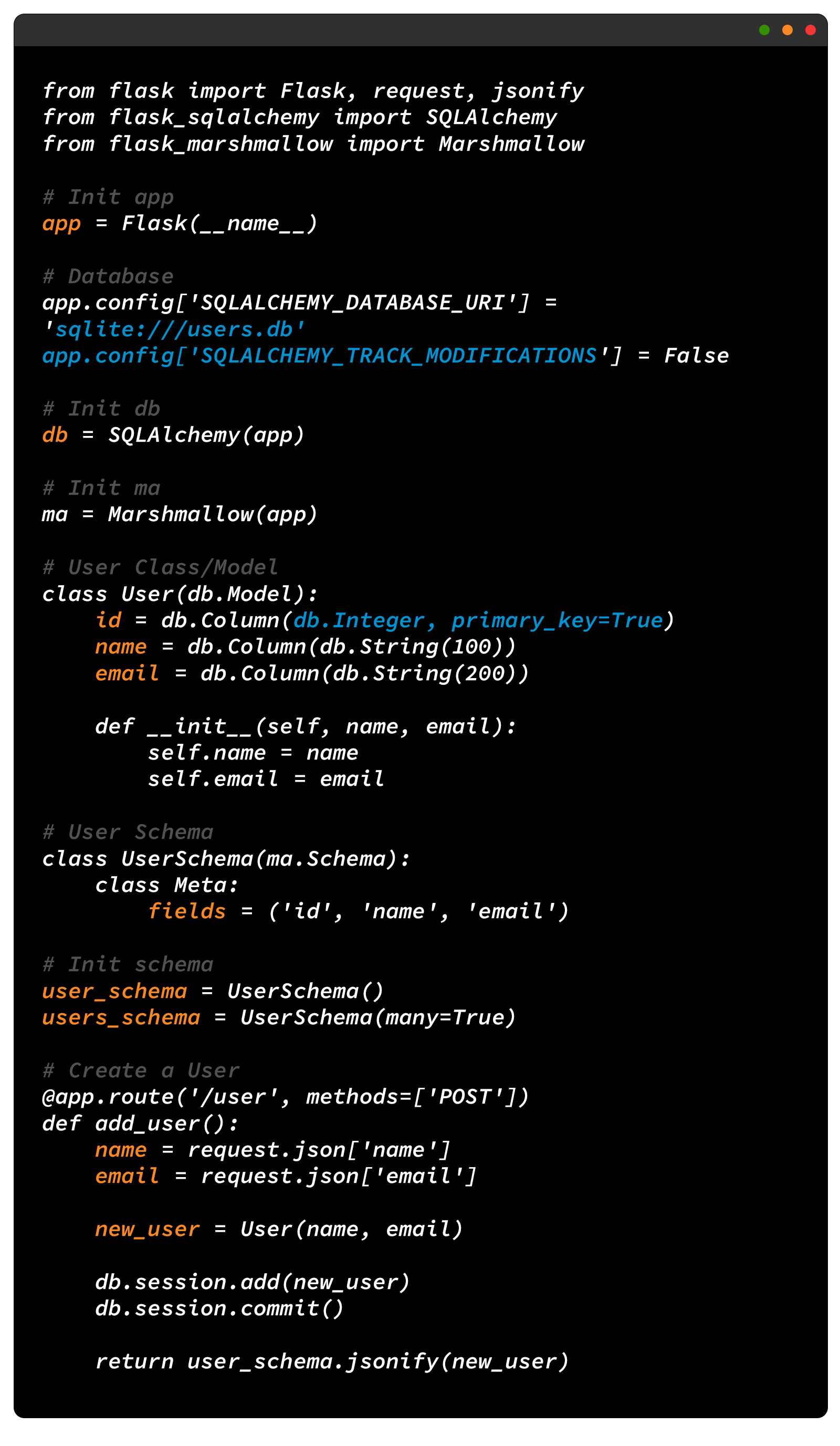
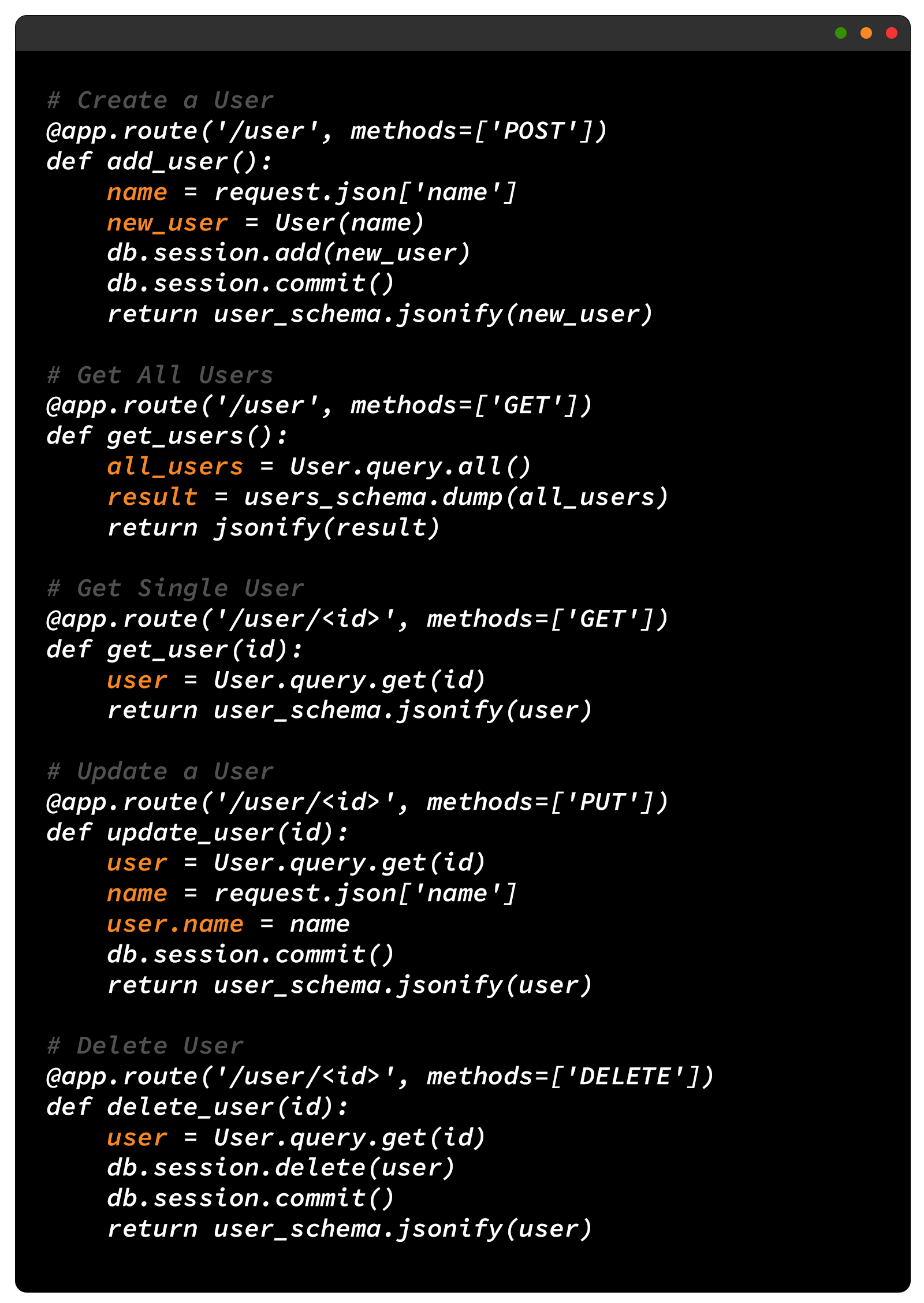
This script does the following:
- Initializes a Flask app and an SQLite database.
- Defines a User model with id, name, and email fields.
- Defines a UserSchema for serializing and deserializing User instances.
- Defines routes for creating a new user (POST /user), retrieving all users (GET /user), retrieving a single user by id (GET /user/), updating a user (PUT /user/), and deleting a user (DELETE /user/).
- Runs the Flask development server.
You can test this API using tools like curl, Postman, or httpie from the command line, or any other API client.
Note: This script uses the flask_sqlalchemy and flask_marshmallow packages. You need to install these packages before running the script. You can install them with pip.
Rest API best practices in Python
Now that you have a basic understanding of creating a REST API using Python let's delve into some best practices. Adhering to these will ensure your APIs are well-designed, reliable, and user-friendly.
Use HTTP Methods Correctly
Each HTTP method has a specific purpose:
- GET : Retrieves data. This should not change the state of the server.
- POST: Sends data to be processed to a specified resource.
- PUT/PATCH: Updates an existing resource with new data.
- DELETE: Deletes a specified resource.
Ensure your API uses the correct HTTP method for each operation to maintain consistency and predictability.
Use Pagination
When dealing with large amounts of data, returning all resources in a single response is inefficient and impractical. Pagination allows you to break the data into manageable chunks, improving performance and usability. For example, you might choose to return 20 resources at a time.
Version Your APIs
Over time, you may need to make changes to your API that are not backward-compatible. To prevent these changes from breaking applications using your API, use versioning. You can include the API version in the URL or as a header in the HTTP request.
Best Python Training In Ahmedabad
At TOPS Technologies, we pride ourselves on being the leading institute for Python training in Ahmedabad. With a stellar track record of successfully placing over 1 lakh students in renowned companies, we have established ourselves as a pioneer in the field.
Our students benefit from our exceptional training methodology, which focuses on practical hands-on experience and real-world projects. As a result, they possess the necessary skills and knowledge to excel in the industry. Our strong company tie-up network ensures that our students receive lucrative job offers from big corporations with high salary packages.
Moreover, TOPS Technologies is a recognized training partner of NSDC (National Skill Development Corporation), providing our students with NSDC Skill Certificates, further enhancing their employability and credibility in the job market.
Conclusion
Building a REST API in Python can be achieved with ease using the Flask framework along with Flask-SQLAlchemy and Flask-Marshmallow extensions.
With approximately 70% of developers using Python for web APIs, the demand and scope in this field are tremendous.
Whether it's Flask's simplicity or Django's robustness, the choice of framework often comes down to personal preference and project requirements. Each has its unique charm and
capabilities.
By enrolling in our Python training in Ahmedabad at
TOPS Technologies, you equip yourself with the skills needed to excel in this field.
FAQs
What is a REST API, and why is it important in Python?
A REST API (Representational State Transfer Application Programming Interface) is a set of rules and conventions that allow communication between different software applications. It enables systems to interact with each other over the internet by providing a standardized way of exchanging data.
In Python, REST APIs are essential for building web applications that can communicate with other systems, retrieve and update data, and provide services to clients or external applications. REST APIs promote scalability, flexibility, and interoperability, making them crucial for modern web development.
How does a REST API work in Python?
A REST API in Python operates on the principles of the HTTP protocol. It uses different HTTP methods (GET, POST, PUT, DELETE) to perform specific operations on resources. Clients make requests to the API using URLs (Uniform Resource Locators) that represent the resources they want to access or manipulate.
In Python, frameworks like Flask or Django can handle these requests, route them to the appropriate endpoints, and return the desired responses in a structured format such as JSON (JavaScript Object Notation).
What are the key components of a REST API in Python?
- Routes: Defined URLs that map to specific functionality or resources in the API.
- Endpoints: Handlers associated with routes that perform actions based on the received requests.
- HTTP Methods: Standardized verbs such as GET, POST, PUT, and DELETE, which determine the type of operation to be performed on a resource.
- Request and Response Objects: These objects encapsulate the data being sent by the client and the data being returned by the API, respectively.
- Data Formats: REST APIs commonly use JSON as the preferred format for data exchange due to its simplicity and compatibility with various programming languages.
How can I create a REST API using Python?
You can leverage frameworks such as Flask or Django to create a REST API in Python. These frameworks provide tools and libraries that simplify handling requests, managing routes and endpoints, and serializing/deserializing data.
The general steps include setting up the framework, defining routes and their associated handlers, implementing the required functionality for each endpoint, and configuring any necessary authentication or authorization mechanisms.
What are the best practices for designing and developing a REST API in Python?
Design principles such as using intuitive and consistent endpoint naming conventions, following the principles of resource-based architecture, and adhering to RESTful practices can improve the usability and maintainability of your API.
Other best practices include proper error handling and response codes, versioning the API for future updates, securing the API using authentication and authorization mechanisms, and providing comprehensive documentation to assist developers in interacting with your API.

